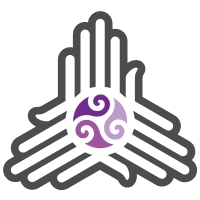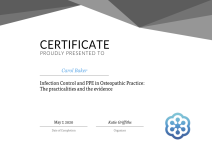
Our techniques
The medical professionals at Trinitas Osteopathic Clinic employ a wide range of proven techniques for each individual case. Below you'll find a brief explanation of the most common osteopathic techniques in use today.
Soft Tissue Massage
Soft tissue techniques such massage targets your muscles, tendons, ligaments, or other connective tissue such as fascia. It is a gentle massage thats promotes relaxation.
Neuromuscular Technique
Neuromuscular therapy (NMT) is an approach to deeper soft tissue massage in which quasi-static pressure is applied to soft tissue to stimulate skeletal muscle. Variation of frictions and pressure release areas of strain within the muscle or muscle groups targeted.
Trigger point
Trigger point therapy is a form of neuromusclar technique. The primary purpose of trigger point therapy is to reduce the pain that results from hypersensitive muscles. Trigger points are identified by gently pressing on the surface of the skin, sensing the texture of the underlying muscle. A trigger point is like a knot the size of a pea, buried deep in the muscle tissue. It is made up of lactic acid, a normal byproduct of muscular activity, which sometimes gets trapped in the muscle as a result of physical, chemical or emotional stress.
Positional Release
Positional Release Therapy (PRT) is a method of total body evaluation and treatment using tender points and body positions of comfort to resolve pain or dysfunction. Its ultimate goal is to correct imbalances in the musculoskeletal system to improve health and function.
Muscle Energy Techniques
Muscle Energy Technique (MET) is a direct active manual therapy that uses the gentle muscle contractions of the client to relax and lengthen muscles and normalize joint motion. Post Isometric Relaxation (PIR) – Muscle to relax after an isometric contraction is the basis of MET.
There are two types of MET:
1. Post-Isometric Relaxation (PIR) The therapist stretches and lengthens a muscle as it relaxes right after a client contraction. This lengthens, relaxes and realigns the muscle fibres.
2. Reciprocal Inhibition (RI) It is a law of body dynamics that when you contract a muscle the opposing or reciprocal muscle must relax. That is the way the brain is wired and the principle that makes this technique work. The therapist has the client’s muscle perform a contraction against resistance which relaxes the opposing muscle.
Joint Mobilisation
Joint mobilisation is a manual therapy intervention, a type of passive movement of a skeletal joint. It is usually aimed at a 'target' synovial joint with the aim of achieving a therapeutic effect. When applied to the spine, it is known as spinal mobilisation.
Joint Manipulation
Joint manipulation is a skilled passive movement of the joints and surrounding soft tissues. The practitoner delivers a high velocity, low amplitude thrust to the various joints showing dysfucntion and restriction. An accompanying, audible release of gas (joint cavitation) that is caused by the release of oxygen, nitrogen, and carbon dioxide, which releases joint pressure (cavitation)
Cranial Sacral Teachniques
Cranial osteopathy is a gentle yet extremely effective therapy that can be used in acutely painful or delicate conditions for people of all ages, from newborn babies to the elderly. Cranial osteopathy is a non-invasive technique whereby the practitoner aids the bosy's natural self-correcting mechanism to relieve trauma that may have occured throughout child-birth, injuries or accidents.
Naturopathy
A system or method of treating disease that employs no surgery or synthetic drugs but uses special diets, herbs, vitamins, massage to assist the natural healing processes.
Naturopathy has three main philosophies:
1. It embraces the healing power of nature and the body’s ability to heal itself.
2. It believes in the Triad of Health. If one of these components is disrupted, then the body will become imbalanced and might experience ill health or dis-ease.
3. Naturopathy believes that all individuals are unique and will respond differently to emotional, structural, nutritional, social or cultural influences and stimuli.
Rehabilitation Exercises and Advice
A exercise rehabilitation program can reverse many disabling conditions or can help patient's cope with deficits that cannot be reversed by medical care. Rehabilitation addresses the patient's physical, psychological, and environmental needs. Exercises and stretches will be prescribed and tailored to your specific needs and circumstances. Other advice may also be given with respect to postural, sporting and occupational aspects of your condition.
Biomechanical/Ergonomic Assessments
A biomechanical/ergonomic assessment is a useful tool to investigate the body's postural alignment as a whole that can if left untreated go on to cause occupational and sporting injuries. It really is looking closely to the root cause of potential problems, looking at slight abnormalities and compensations that can give rise to a variety of different common complaints, such as low back, pain, knee pain, neck and thoracic pain, tension headache and shoulder complex pain. This type of treatment is looking at the socio-medical model of care, whereby the practitoner is concenred with prevention on cure.



